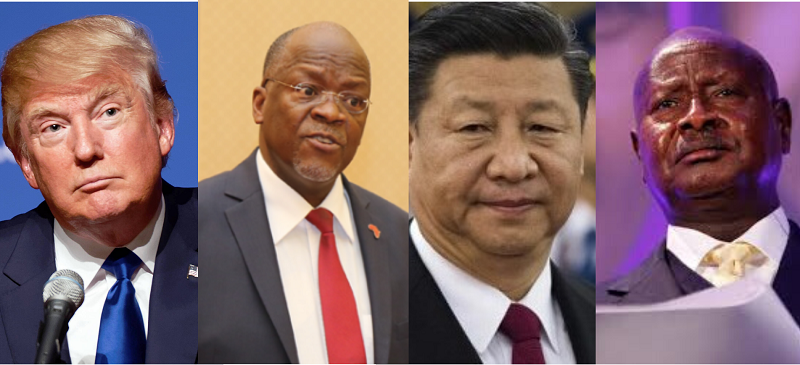“The beginning of an occupation in London’s Square Mile”
October 22 The ‘Occupy’ protests against unfettered capitalism have spread from New York to the City of London and are increasingly making headlines, writes Aishah Namukasa, a Ugandan student living in Germany.
The ‘Occupy’ protests against unfettered capitalism have spread from New York to the City of London and are increasingly making headlines, writes Aishah Namukasa, a Ugandan student living in Germany.
On Saturday 15 October 2011, thousands of ‘Occupy the London Stock Exchange protestors, alongside curious observers and bystanders, thronged St Paul’s Cathedral churchyard in London.
The majority of these people came to participate in an ‘occupation’ that some view as an echo of the Spanish protests in May and the ‘Occupy Wall Street’ protests now underway in New York. Others dubb it a ‘Tahrir Square’ in the making.
Organisers of the Occupy LSX describe it as “the beginning of a planned peaceful occupation in London’s Square Mile” that is intended “to highlight and address social and economic injustice in the UK and beyond, as part of a global movement for real democracy.”
It has echoes of a 2009 student occupation of a university lecture theatre to show solidarity with Gaza and protest about cuts to university funding and increases in tuition fees, as well as, more recently, protests against the UK’s Health and Social Care Bill and welfare and job cuts.
Certainly students are some of the most ardent supporters of Occupy LSX. Those interviewed say they are tired of bankers and financial institutions which they perceive as responsible for the current financial crisis.
What is different from prior protests, however, is that in the present ‘occupation’, the would-be ‘occupiers’ can only get as far as a religious place of worship, St. Paul’s Cathedral, since the police have barred them from accessing the principal target, Paternoster Square.
Unlike the university buildings that were open to the public at the time of occupation, the square became ‘private land’ following a High Court injunction. Only tenants of the adjoining buildings and their authorised visitors on proof of identity can go into it.
How have the police reacted? Well, at around 1.30 to 2.30pm on the first day of the protest last weekend, the police prohibited protestors and bystanders from leaving the grounds of St. Paul’s, which some observers described as like a “containment” or a “quarantine”. Later the police permitted people to leave the grounds, but they would not allow more people to go in, perhaps due to health and safety considerations or fearing a repeat of the atrocious August London riots.
Yet unlike the August riots, the Occupy LSX protest has remained peaceful so far. Elsewhere in New York, and Rome, demonstrations have turned violent and several hundred people have been arrested. This is not to say the London protests have passed off without incident.
During the first day of the Occupy LSX, one young person repeatedly insulted and taunted the police for no apparent reason. Onlookers were in awe of the police officers for their patience in dealing with this particular individual who at one point sought to break through the police’s human cordon. This patience ran out after the individual refused to move while a police van reversed and the police bundled the person off to safety.
According to the BBC, the police arrested two people. While other newspapers put the figure for assault on police and two for public order offences at three or five. It is likely that the young person was one of those arrested on that day.
At present, Paternoster Square remains barred from protestors who continue to occupy the grounds of St. Paul’s. The ‘World Order’ remains unchanged, but probably rattled at emerging global movements demanding more rights and real democracy. One thing is certain, many occupiers are determined to stay for weeks.
……………………………………………………………………………………………………………………..
Note: The opinions expressed in this article are those of the author and do not necessarily represent the views of the Commonwealth Youth Programme. All articles are published in a spirit of improving dialogue, respect and understanding. If you disagree, why not submit a response?
To learn more about becoming a Commonwealth Correspondent please click here.
……………………………………………………………………………………………………………………..



